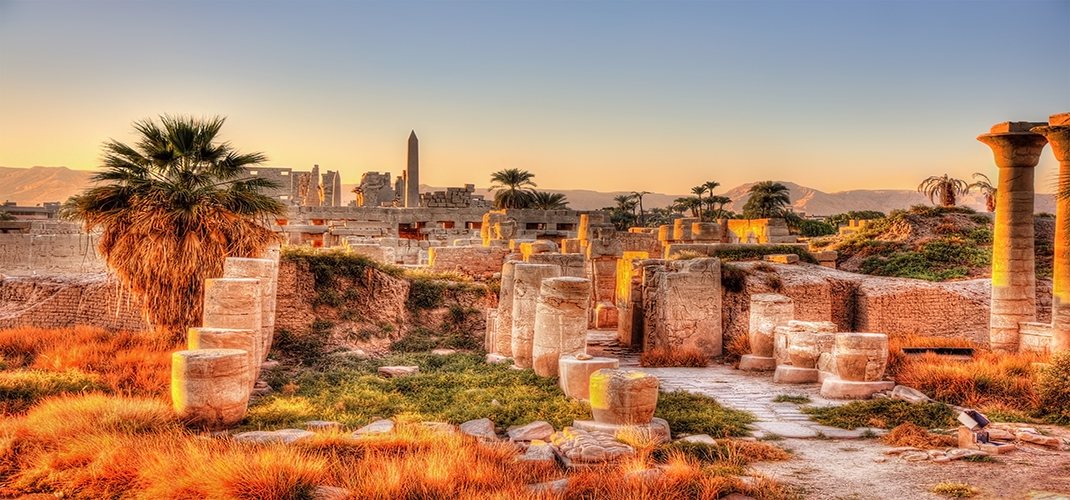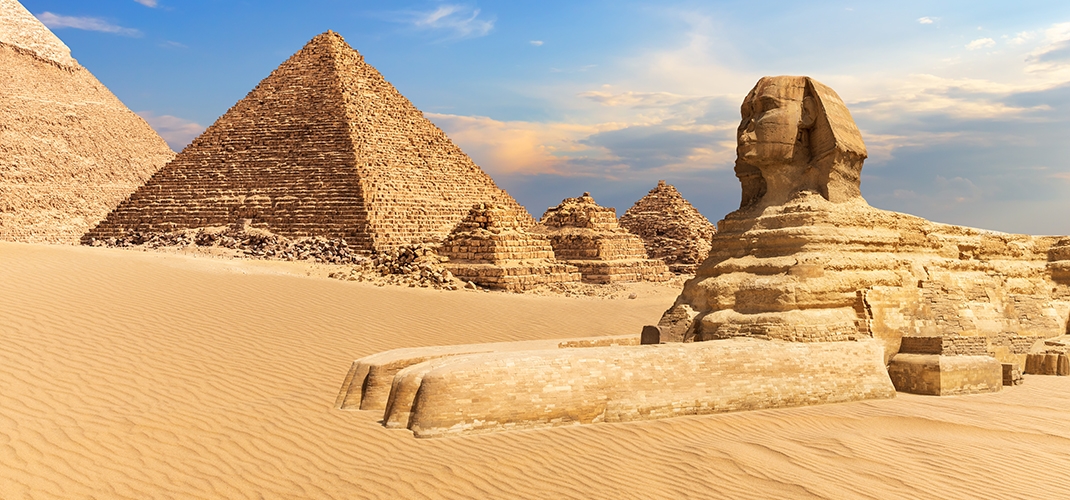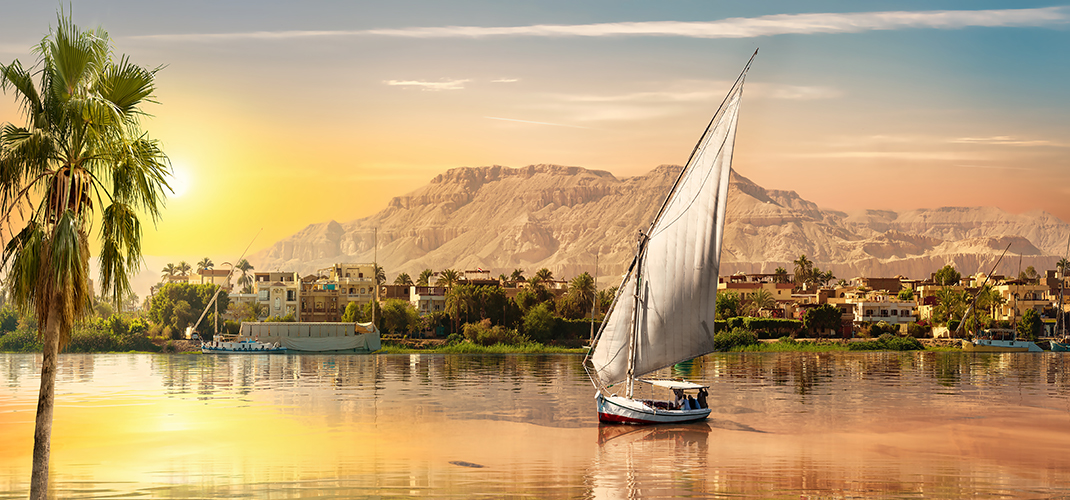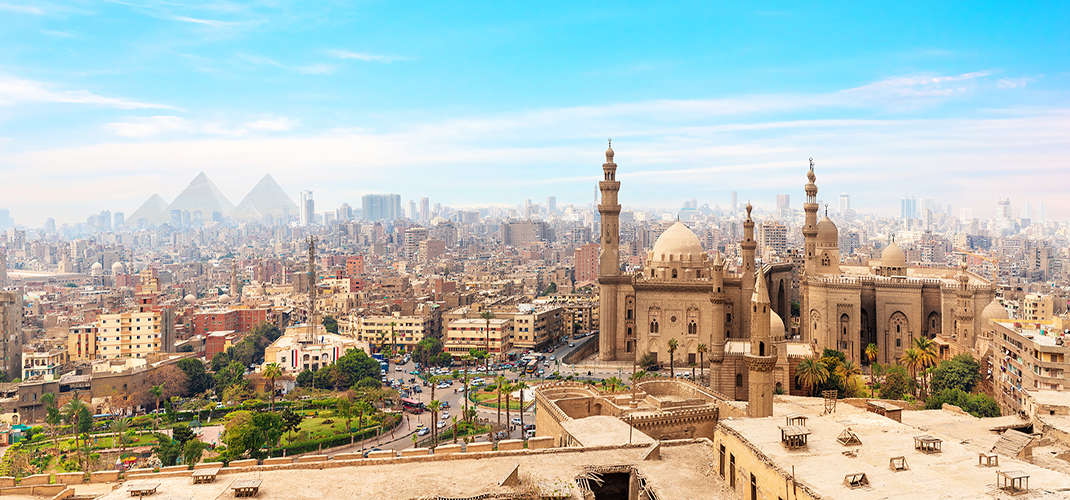Luxor

Located on the East bank of the Nile the city of Luxor is the site of the ancient Thebes, the Pharaohs’ capital at the height of their power. Today, the city sits around two huge, surviving ancient monuments, the Luxor Temple and Karnak Temple. The Royal Tombs of the Valley of the Kings and the Valley of the Queens sit on the river’s West Bank.
The Temple Complex of Karnak has to be one of the most amazing precincts and within the complex, you will find the Great Temple of Amun, the Temple of Khons and the Festival Temple of Tuthmosis III, as well as many other minor Temples and Sanctuaries. All the monuments have been built on a colossal scale, reducing visitors to ant-like dimensions as they look up at the mighty columns.
Within the Valley of the Kings there are 63 Tombs, with a list of famous names from Egyptian history, including the famous boy King, Tutankhamun. The Tombs are only open on a rotation system so they can preserve the paintings from damage caused by humidity. Hidden between the rocky cliffs of Luxor's West Bank, the Valley of the Kings was the final resting place for the Kings of the 18th, 19th and 20th Dynasties. Covered in intricately detailed wall paintings, the Tombs are normally the number one stop on any West Bank visit.
Situated on the West Bank are the Tombs in the Valley of the Queens, mainly from the 19th and 20th Dynasties. There is approximately 80 Tombs that are now known, most of them excavated between 1903 and 1905. A majority of the Tombs are unfinished and without decoration, resembling mere caves in the rocks, however there are a few carved inscriptions or reliefs with much of the decoration consisting of paintings on stucco. There are only four Tombs open to the public for viewing, one being the legendary Tomb of Queen Nefertari.
Located in the modern downtown district, you will see the Luxor Temple an ode to the changing face of Egypt through the centuries. It was first built by Amenophis III and was known as ‘The southern Harem of Amun’ and was dedicated to Amun, his consort Mut and their son the moon god Khons. The Temple comprises of Chapels of the deities with their vestibules and subsidiary chambers, a large Hypostyle Hall and an open Peristyle Court.
One of Egypt's best museums is the Luxor Museum with its fabulous, exhibited collection covering the local area. The museum tells the story of ancient Thebes, from the Old Kingdom up to the Islamic Period. Two of the top possessions are the two Royal Mummies of Ahmose I and what is assumed to be Ramses I. The upstairs of the museum has a glittering display of amulets, silver bowls, grave and tomb furnishings with votive tablets running across the middle of the floor space.
A great way to see Luxor is to take a 45 minute sunrise hot air balloon ride over the West Bank. From the air you will see the lush farming fields situated between the barren cliffs, while observing the area's Temples and Tomb sites from above. Another way to relax in Luxor is to take a Felucca ride to the palm shaded Banana Island just five kms upriver.
Queen Hatshepsut's Temple, The Temple of Deir el-Bahri is beautifully situated on the West Bank, at the foot of the sheer cliffs fringing the desert hills. This light coloured, sandstone Temple stands out prominently against the golden yellow to light brown rocks behind. The complex is set out over three terraces rising from the plain, linked by ramps. Inside of the complex you will find richly adorned statues, reliefs and inscriptions.
The Colossi of Memnon are normally the first monuments you will see when arriving into Luxor. These giant statues sit beside the main road and go from the suburb of Al-Gezira to the west shore of the Nile bank. Carved out of hard yellowish brown sandstone quarried in the hills above Edfu, they represent Amenophis III seated on a cube shaped throne that once stood guard at the entrance to the King's Temple. When you walk behind the statues you will be able to see the enormous site that is currently being excavated by archaeologists.
The Mummification Museum is a small yet fascinating museum located in Luxor's downtown area. The museum explains the process behind the ancient Egyptian practice of mummification in a series of well set out and informative displays. The exhibits include actual mummies (both human and animal) and the tools including the spatulas used to scrape the dead person's brains out, used in the mummification process.
The great Mortuary Temple built by Ramses II and dedicated to Amun, lies on the edge of the cultivated land, some one and a half kilometres south of Deir el-Bahri on the West Bank. Although only about half of the original structure survived, it is still a highly impressive monument.
With the famous Valley of the Kings and Temple of Deir al-Bahri the main attractions, Medinet Habu often gets forgotten but this is one of Egypt's most beautifully decorated Temples. The complex consists of a small, older Temple built during the 18th Dynasty and the great Temple of Ramses III, associated with a Royal Palace. The main Temple area was built exactly on the model of the Ramesseum and like the Ramesseum, was dedicated to Amun. The reliefs here are some of the best you'll see on the West Bank.
The Mortuary Temple of Seti I is situated on the West Bank and is dedicated to Amun and to the cult of the King's father Ramses I. Left unfinished by Seti I, it was adorned by Ramses II with reliefs and inscriptions. The Temple was originally 158 metres long, however all that remains today is the sanctuary with its various halls and chambers and some flimsy fragments of the courts and pylons.





